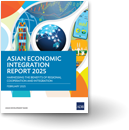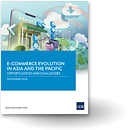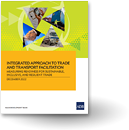Leveraging FDI to increase worker productivity in Asia
Many have noted that Asian countries need to rebalance their economies. Several have argued that the best way to rebalance growth is by increasing productivity. This raises wage rates and labor income over time, increasing the long run purchasing power of consumers. In addition, growth rebalancing should be accompanied by efforts to increase the domestic content of the goods produced. Developing Asian countries would benefit if more of the value-added of production could be produced domestically.
How can developing Asian countries increase the domestic content of exports? To do this they need to advance from simple to complex production activities—from assembling imported parts and components to participating in the engineering and design aspects of production. It is crucial for local firms and entrepreneurs to obtain technology transfers and positive spillovers from the operation of multinational enterprises (MNEs) in their countries. Once the country attracts a critical mass of FDI and industrial agglomeration develops, local firms can penetrate production networks and receive technology transfers.
East Asian FDI began in earnest after the Japanese yen appreciated 60% following the Plaza Accord in September 1985. Japanese firms lost their price competitiveness and responded by shifting labor-intensive activities to other Asian countries. Japan then focused on producing technology-intensive parts and components and exporting these to factories in the region for assembly and re-export. There was thus a complementary relationship between Japanese FDI and Japanese exports to East Asia.
After the Plaza Accord, Japanese MNEs transferred factories to the Republic of Korea and Taipei, China. However, in the late 1980s, both wages and exchange rates in these economies skyrocketed. The locational advantage of assembling labor-intensive goods in the newly industrialized economies (NIEs) declined, and Japanese firms transferred production to the ASEAN countries. Surplus labor in ASEAN held wages down, and exchange rates in these countries were pegged at competitive levels relative to the US dollar. Japanese MNEs provided ASEAN firms with detailed engineering and managerial instructions and specifications, facilitating the assimilation of new technologies.
This led to learning and growth that continued until the Asian Economic Crisis of 1997-1998. With the crisis, new Japanese FDI to ASEAN collapsed. However, the flow of parts and components from Japan to ASEAN continued unabated and Japanese firms did not pull out. Thus, Japanese investment in the region was not footloose.
After the People’s Republic of China (PRC) joined the WTO in 2001, there was a surge in FDI from East Asian countries to the PRC. The PRC’s WTO accession gave foreign investors confidence that the PRC would sustain an FDI-friendly environment. The PRC quickly became the final assembly point of intricate production and distribution networks. It imported hundreds of billions of dollars of parts and components from East Asia and exported the final assembled products throughout the world.
Modeling this trade within East Asian production networks has proven difficult. Traditional theories emphasize trade in final goods driven by differences in technology and factor endowment. Production fragmentation, on the other hand, involves trade in intermediate goods. Scholars have proposed a conceptual framework to explain this slicing up of the value chain, under which firms fragment production when the production cost saving that arise from fragmentation exceeds the cost of linking geographically separated production blocks (the service link cost).
The service link cost is useful for explaining the development of production networks in East Asia. For example, the global value chain for notebook PCs centered in the Yangtze River Delta of the PRC developed in response to a reduction in the service link costs. These costs were lowered when the government of Taipei, China deregulated outgoing FDI for notebook PC companies seeking to invest in the PRC and when the government of the PRC established a superb network of modern highways, ports, and airports in the Delta.
This caused many firms to locate in this area and led to economies of scale. Service link costs fell because the large number of firms in close proximity made it easier for firms to procure parts and components and to handle frequent specification changes. In addition, the many business partners and different skills and technologies in close proximity reduced costs.
There is the possibility of a virtuous cycle emerging in the region. Lowering the service link cost would attract FDI. Once countries receive a critical mass of FDI, industrial agglomeration would start to take place. Local firms would then have opportunities to obtain technology transfer and increase their competitiveness, and governments would receive more revenue to invest in infrastructure. This in turn would attract more FDI.




